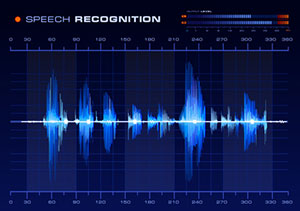Audio Recording Forensics On CSI

In the episode, Long Road Home, a character recorded a demo at a studio, and the CSI team bring the audio up on their screen to analyze it. One of the team says, “look at the wave form here.” There was absolutely nothing odd about the audio he was pointing at. And the audio itself was mono. Any kind of commercial recording studio – heck, any kind of ANY kind of studio – would record a song in stereo, not mono. That was the first stupid thing. Then there was the part where they hit a button and magically hear some 2nd person who was singing backup in the studio and “bled” into the lead singers track. So if they were recording multitrack music, why did they mix it down to mono? Never mind that. Trust me when I say there is no way they could have eliminated all the main audio, which was guitar and a male lead vocal, and leave behind the voice of some other mystery person, also a male, who was singing into a different mic and being recorded onto a 2nd track. Gaahh! They also said the microphone was “omnidirectional.” But if you were recording a guitar and lead vocal along with a backup singer, who was supposed to be on a separate track, you would NOT use an omni. It would be exactly the wrong kind of mic to keep the lead somewhat isolated from the background vocalist so you could mix them. You’d use directional mics. Sigh. But I digress…again.
OK. OK. Some of you may be wondering why I say it is not possible, when you can fairly easily remove a lead vocal from some music recordings in order create, say, a karaoke track. In editing software, that is usually called “center-channel extraction.” Wanna know why it is called that? Because in a stereo recording (99.99999999999999999 – are you getting the idea? – 999999% of any commercial music recording since 1970), instruments and vocals and effects are spread across the audio stage from left-to-right. And the lead vocal is always (well, 99.99999% etc.) panned dead-center, which really means it isn’t panned at all. So with a bit of audio manipulation, like folding all the stuff left of center over and on top of the stuff right of center (like an audio taco), and then cutting out the part in the crease, then opening the taco again, you can leave everything but the lead vocal. So it might JUST be possible to hear some other voice that drifted in from left or right. But it would STILL be mixed in with the music, so it would be barely audible over the remaining music and certainly not clear enough for a “voice print match” or whatever other audio nonsense they dabble in on the forensic shows.
But the CSI folks didn’t have a stereo file. It was mono. That basically means that everything is panned dead center, by default. If you tried the trick of folding an audio taco on a mono file – well, you couldn’t fold it because there is no “left-to-right audio field” with mono. There’s only a string of audio up the center. OK, weird metaphor I guess. Maybe a blender is better. If you put a tomato, an onion, and a celery stalk into a blender and whipped it into juice, it would be impossible to “isolate” the onion after the fact, right? You did say “right” didn’t you? OK, that’s sort of what the CSI crew supposedly did.
Don’t you just love posts that get my inner audio geek all revved up? The bottom line is that you should not get your knowledge of audio recording and editing from CSI. Home Brew Audio is a much better bet;).

CS-Sigh. only on tv ay. good article.